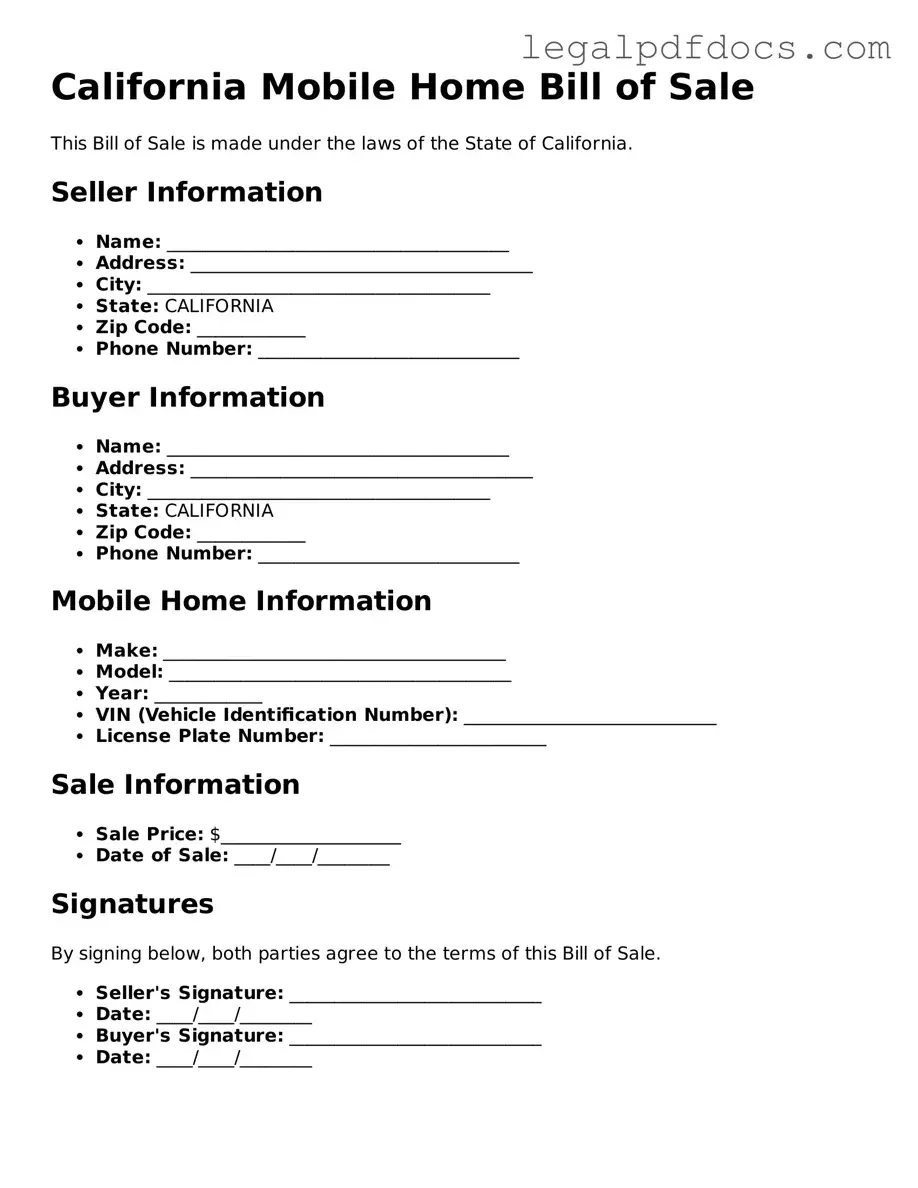Official Mobile Home Bill of Sale Form for California
The California Mobile Home Bill of Sale form is a legal document used to transfer ownership of a mobile home from one party to another. This form not only serves as proof of the transaction but also includes essential details about the mobile home and the parties involved. Understanding how to properly fill out this form is crucial for ensuring a smooth transfer process.
Ready to take the next step? Fill out the form by clicking the button below.
Open Mobile Home Bill of Sale Editor Here
